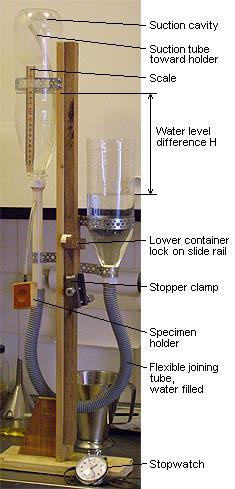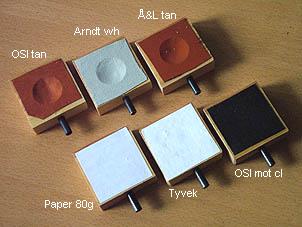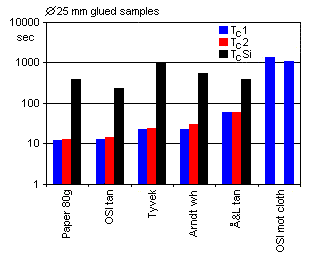The upper left bottle is at a fixed position at top of the stand. The lower right bottle has its bottom cut off and can be slided up and down along a guiding rail. A suitable amount of water is filled into this container. The range of under pressure in the left container can now be controlled and is measured in terms of water column H using the scale. A 6mm ID plastic tube joins the topmost 'suction cavity' to the specimen. On its way down this tube penetrates the big tube below the left container, also this passage is soldered tight with melting glue.
For measurement do the following procedure. With the specimen disconnected, raise the right container to a top position to make the water levels equal in the two containers, somewhat above the zero mark on the scale. The specimen is then connected to the thin tube and the right container is let down to an experimentally pre-determined position. The water level in the left container will then gradually sink due to the specimen leakage. Using a stopwatch the time is found from when the left container level passes the scale zero mark until it has gone down another e.g. 50 or 100 mm.

The pressure difference across the specimen is most easily denoted in terms of the water column H. It may be regarded as a slight drawback that H varies throughout a measurement interval. Using the scale you should determine the initial and final values of the water column height H.

